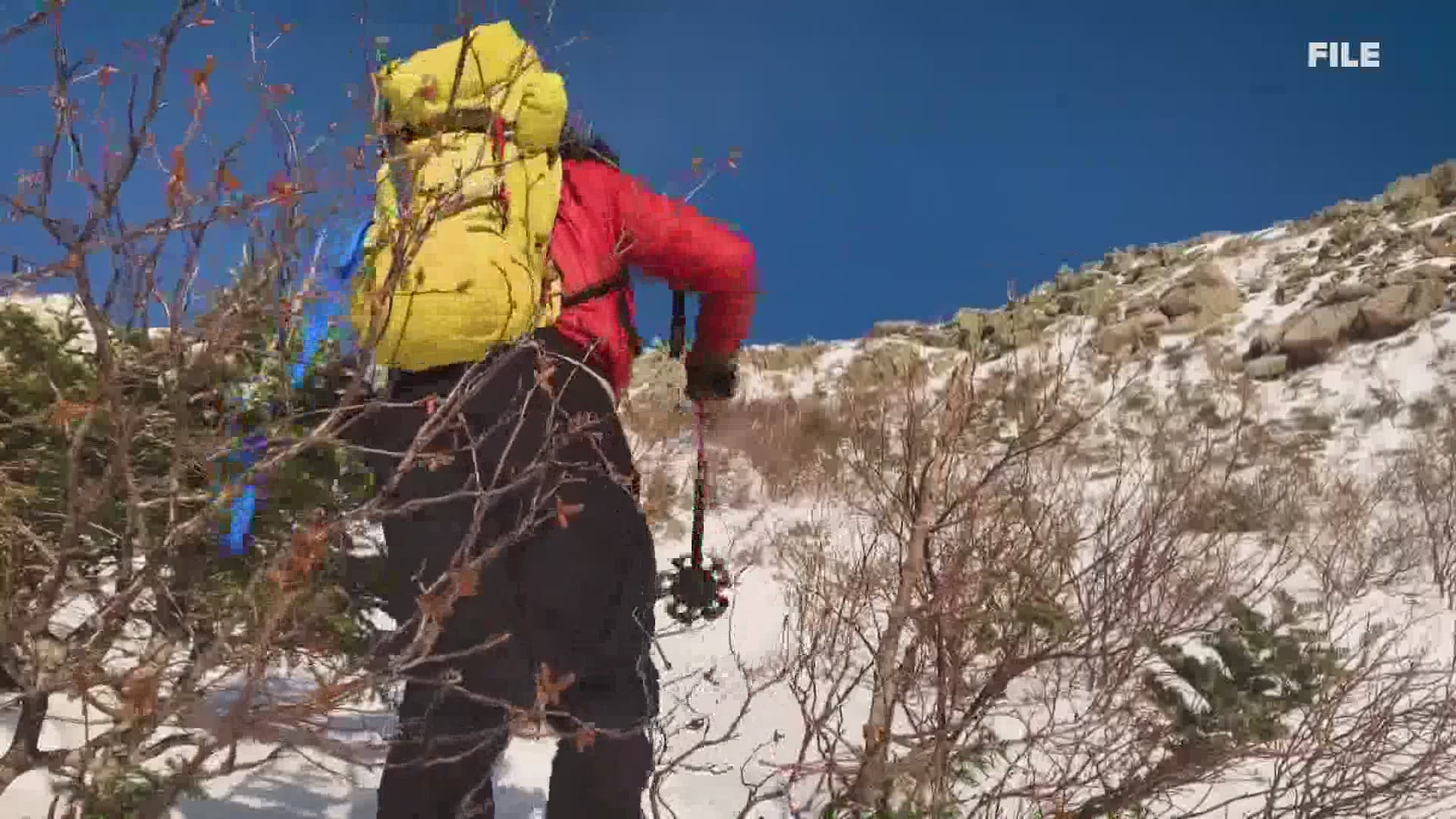MAINE, USA — "It's never a problem until it becomes a problem," said experienced Maine hiker Dan Murphy, who knows the dangers hiking this time of year in the state can bring.
"Start small," said Murphy. "People all have it in their minds that they want to be on the Katahdin's and the Mt. Washington's because they're spectacular and they're dangerous. But that's not the place to start."
As temperatures begin warming this spring, more and more Mainers are looking to get out and explore Maine's mountains. Doing so this time of year however poses serious challenges as many trails are still ice and snow-covered, while others are filled with mud.
Last week, a Massachusetts couple was found dead in Acadia National Park after nearly a nearly 100 ft. fall on Dorr Mountain. It's unknown what caused the incident, but hikers of all skill levels are urging caution.
"It can be kind of crushing to your soul, but sometimes your best option is to just turn around," said Jodi Brewer. Brewer became an avid hiker in 2017 and is just beginning her winter hiking experience.
Brewer recommends starting small, even on flat terrain like at a land trust to become more familiar. She says with current conditions, she always packs spikes or crampons, along with other safety gear to be prepared for any situation. She adds however it's never worth putting yourself at risk.
"I typically plan the hike I want to do, and if the trail conditions aren't conducive to me doing that, I have a second option in the area that I can go do," said Brewer.
The National Parks Service lists 10 essentials to bring with you on every hike. That includes:
- Navigation: Map, compass, and GPS system
- Sun Protection: Sunglasses, sunscreen, and hat
- Insulation – Jacket, hat, gloves, rain shell, and thermal underwear
- Illumination – Flashlight, lanterns, and headlamp
- First-aid supplies – First Aid Kit
- Fire – Matches, lighter and fire starters
- Repair kit and tools – Duct tape, knife, screwdriver, and scissors
- Nutrition - Food
- Hydration – Water and water treatment supplies
- Emergency Shelter – Tent, space blanket, tarp, and bivy
The NPS has also added hand sanitizer and a mask to that list amid the pandemic.
"There's a lot of great cell phone apps these days. GPS style apps. But they're relying on that. Basically, your cell phone guiding you the whole way," adds four-season hiker Nick Karahalious.
All of these hikers add it's important to know how to use all of your equipment too including maps and a compass.
"You can get into a situation very quickly, and get in over your head and if you don't have the knowledge to get out, that's a problem," said Murphy.
When hiking, all three also add to always hike with others, and let friends or family know where you'll be going and when you'll be returning.
You should also know your limits, and don't become overconfident in your own hiking ability. Also, get as much information on trail conditions prior to going as you can, and if you feel unsafe, turn around.

